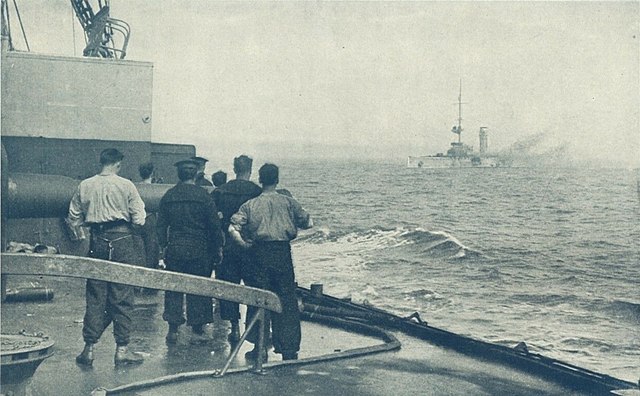The Kolberg class was a group of four light cruisers built for the German Imperial Navy and used during the First World War. The class comprised four vessels: SMS Kolberg, the lead ship, Mainz, Cöln, and Augsburg. The ships were built between 1908 and 1910, and two, Kolberg and Augsburg, were modernized in 1916–1917. The ships were armed with a main battery of twelve 10.5 cm SK L/45 guns and had a design speed of 25.5 knots. The first three ships were assigned to the reconnaissance forces of the High Seas Fleet; Augsburg was instead used as a torpedo and gunnery training ship.
SMS Cöln
Mainz, badly damaged, moments before sinking
The Imperial German Navy or the Kaiserliche Marine was the navy of the German Empire, which existed between 1871 and 1919. It grew out of the small Prussian Navy, which was mainly for coast defence. Kaiser Wilhelm II greatly expanded the navy. The key leader was Admiral Alfred von Tirpitz, who greatly expanded the size and quality of the navy, while adopting the sea power theories of American strategist Alfred Thayer Mahan. The result was a naval arms race with Britain, as the German navy grew to become one of the greatest maritime forces in the world, second only to the Royal Navy.
Major elements of the High Seas Fleet in the early 1910s
Proclamation of Wilhelm I as Emperor of Germany at Versailles, France in 1871
Wilhelm II in German Admiral's uniform in 1913
Alfred von Tirpitz






